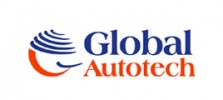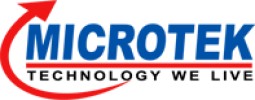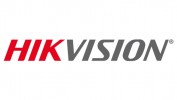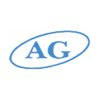Filter interviews by
Marc Sanitation Interview Questions and Answers
Marc Sanitation Interview Experiences
2 interviews found
I applied via Walk-in and was interviewed before Dec 2021. There were 2 interview rounds.

(2 Questions)
- Q1. Knowledge about 5S and least count of vernier and micrometer?
- Ans. Least count of vernier is 0.1mm and least count of micrometer is 0.01mm.
- Q2. What is cycle time and where it is used??
- Ans.
Cycle time is the total time required to complete a process or task, from start to finish.
Cycle time is a measure of efficiency and productivity in production planning.
It helps in identifying bottlenecks and optimizing workflow.
Cycle time is used in various industries such as manufacturing, logistics, and software development.
For example, in manufacturing, cycle time can refer to the time it takes to produce one unit o...
Interview Preparation Tips
- Kaizen
- 5S System
- Instrumentation
- SAP
I applied via Recruitment Consultant and was interviewed in Jun 2021. There was 1 interview round.
Interview Questionnaire
1 Question
- Q1. Mostly questions were from my previous job,what were my responsibilities,what was achivement in that company and many more.
Interview Preparation Tips
It'll help you lots
Top trending discussions






Interview questions from similar companies

I applied via Recruitment Consulltant and was interviewed in Jun 2022. There were 4 interview rounds.

(2 Questions)
- Q1. Technical knowledge about area
- Q2. English is required as fluent
Question abou TPM, OEE, six Sigma, lean manufacturing,kaizen,poka yoke etc
(1 Question)
- Q1. No sales discuss the directly give you ofer with hike of 30-40%
Interview Preparation Tips
Be confident
Share only you know very well.
Short but exactly answers the required in interview stories are no one like

I appeared for an interview in Sep 2024, where I was asked the following questions.
- Q1. Describe yourself
- Ans.
I am a motivated and adaptable individual with a passion for learning and contributing to team success.
Strong academic background in relevant subjects, such as biology and chemistry.
Experience in teamwork through group projects in school, enhancing collaboration skills.
Eager to learn new skills and take on challenges, demonstrated by volunteering in community health initiatives.
Excellent communication skills, developed...
- Q2. Why do you want to join

- Q1. Tell me about your last company review
- Q2. What is your goal
- Ans.
My goal is to continuously grow professionally while contributing positively to my team and organization.
Develop my skills in project management to lead successful initiatives, like organizing a team project that improved efficiency by 20%.
Aim for a leadership position within the next five years, where I can mentor others and drive strategic decisions.
Contribute to a positive team culture by fostering collaboration and...

I appeared for an interview before Mar 2024, where I was asked the following questions.
- Q1. Why do you want to work here
- Ans.
I admire your company's innovative approach and commitment to excellence, which aligns with my career goals and values.
Your company's focus on cutting-edge technology resonates with my passion for innovation, as seen in my previous project on AI-driven solutions.
I appreciate your commitment to professional development, which aligns with my desire to continuously learn and grow in my engineering career.
The collaborative...
- Q2. What are your future plans
- Ans.
I aim to enhance my technical skills, lead innovative projects, and contribute to team growth while pursuing continuous learning.
Pursue advanced certifications in cloud computing to stay updated with industry trends.
Lead a cross-functional team to develop a new product feature that improves user experience.
Mentor junior engineers to foster a collaborative and growth-oriented team environment.
Engage in open-source proje...

(2 Questions)
- Q1. Questions will be asked on previous company roles and responsibilities.
- Q2. Depends upon previous experience.
(2 Questions)
- Q1. Basics on structure and finishings
- Q2. Questions on structure and finishings
Interview Preparation Tips

I appeared for an interview in Mar 2025, where I was asked the following questions.
- Q1. Technical civil
- Q2. Civil Quality cube test
Interview Preparation Tips

I applied via Naukri.com and was interviewed in Dec 2023. There were 2 interview rounds.
(2 Questions)
- Q1. Tell me About yourself
- Q2. Where you see yourself in next 3 years
(3 Questions)
- Q1. Tell me previous jobs profile
- Q2. Tell me your previous responsibilities
- Q3. Tell me your achievements

I applied via Walk-in and was interviewed in Jul 2022. There were 2 interview rounds.
Arithmetic, reasoning, English
(1 Question)
- Q1. Is your coching in progress
Interview Preparation Tips
- Core Java
Marc Sanitation Interview FAQs
Tell us how to improve this page.
Interview Questions for Popular Designations
Overall Interview Experience Rating
based on 1 interview experience
Difficulty level
Duration
Interview Questions from Similar Companies
Marc Sanitation Reviews and Ratings
based on 9 reviews
Rating in categories
|
HR Manager
3
salaries
| ₹8 L/yr - ₹8 L/yr |
|
Assistant Engineer
3
salaries
| ₹2.5 L/yr - ₹2.6 L/yr |
|
Production Planner
3
salaries
| ₹2.4 L/yr - ₹2.7 L/yr |

ZF Steering Gear

Dhoot Transmission

Amphenol Interconnect

Microtek International
- Home >
- Interviews >
- Marc Sanitation Interview Questions







